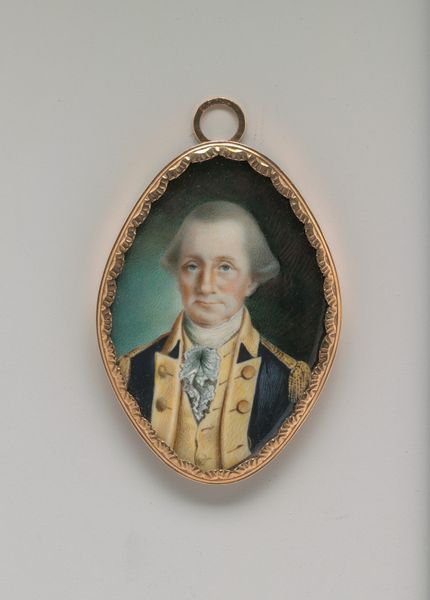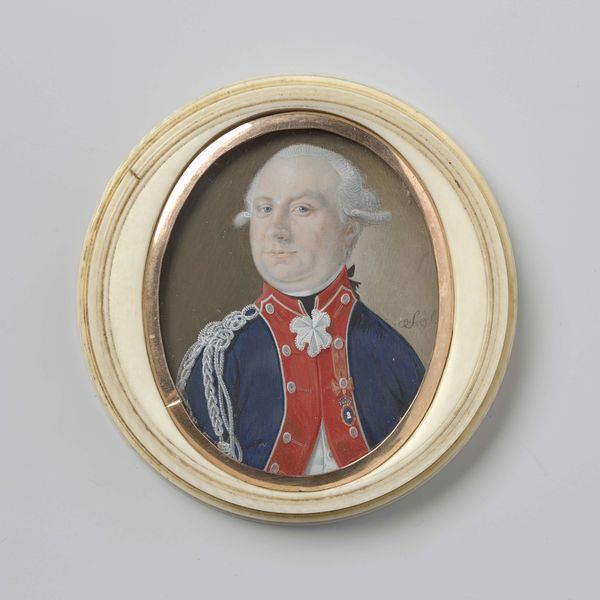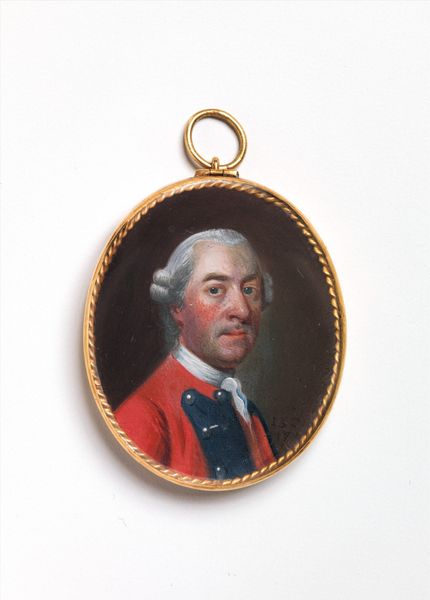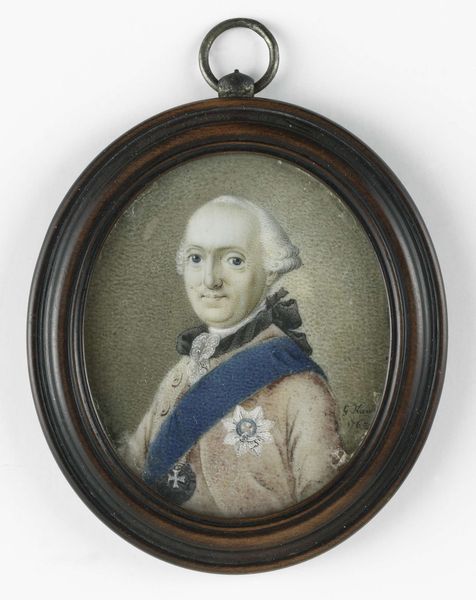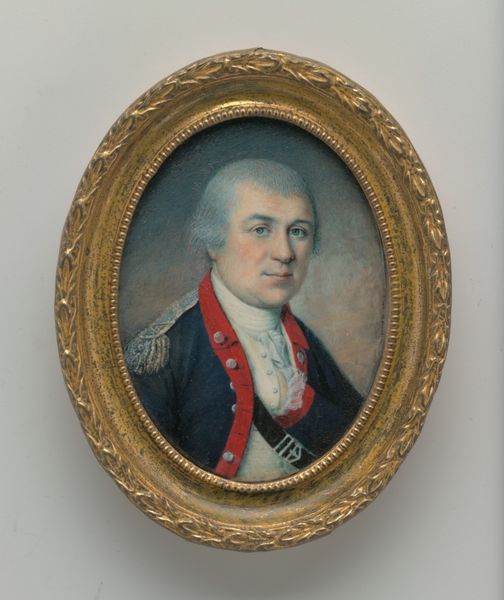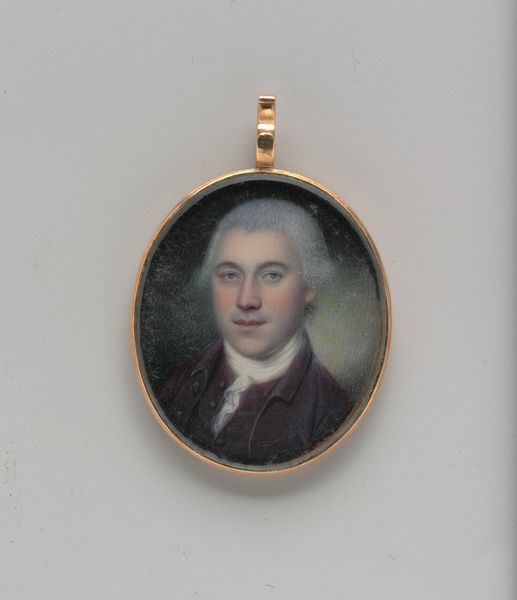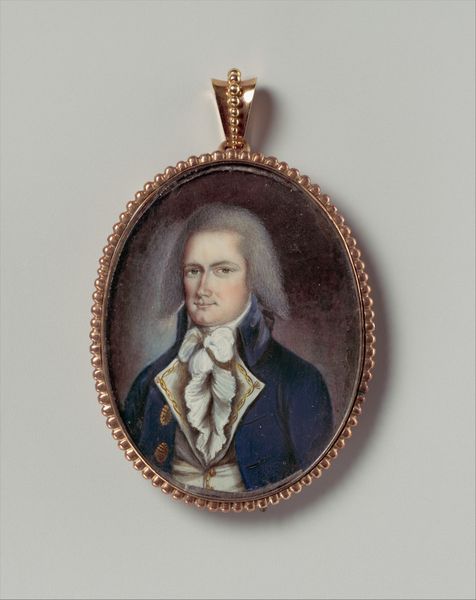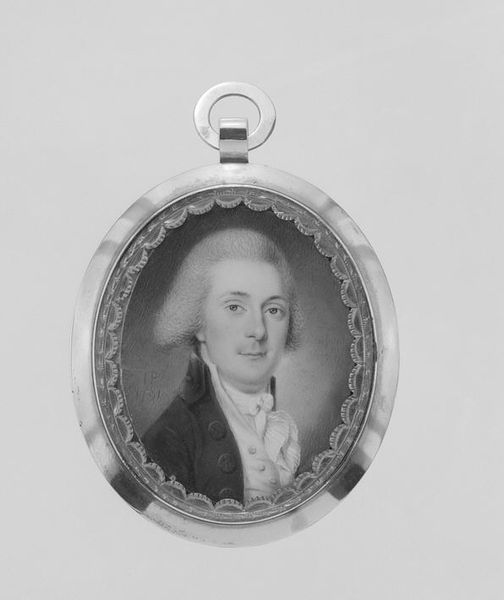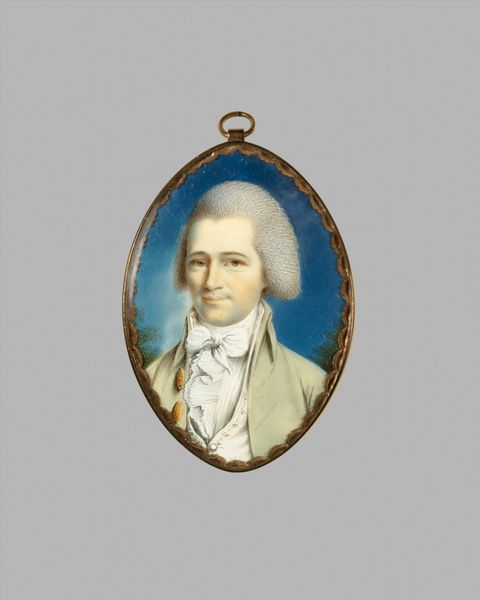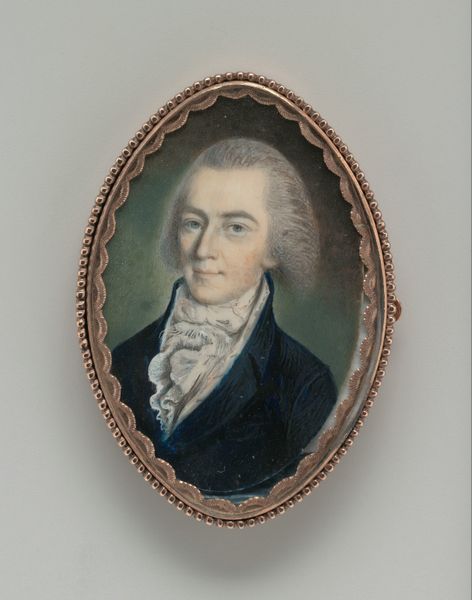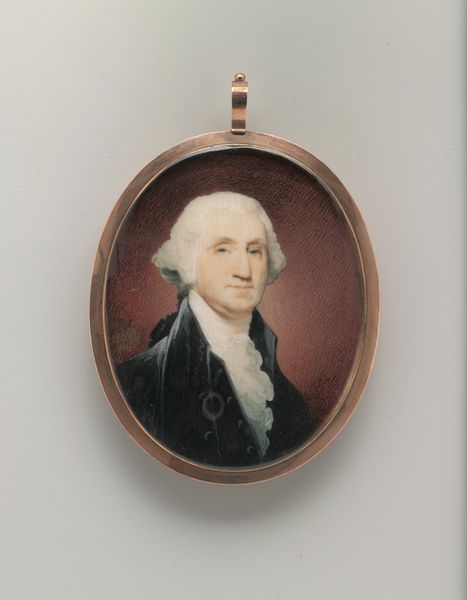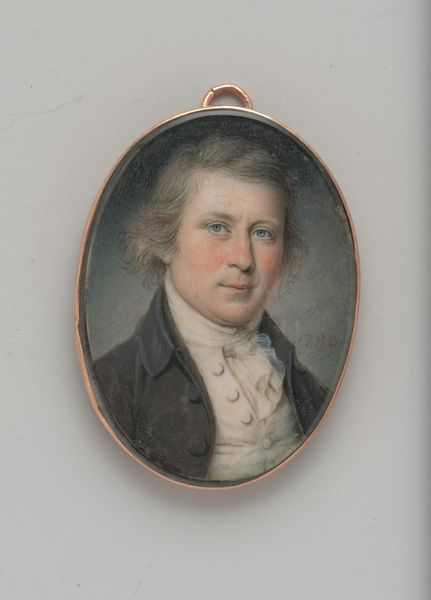
Dimensions: 1 5/8 x 1 1/4 in. (4.1 x 3.2 cm)
Copyright: Public Domain
Curator: This miniature portrait, “John Maunsell,” was created with oil paint sometime between 1780 and 1790 by John Ramage. It's currently held at the Metropolitan Museum of Art. Editor: What strikes me is the starkness, the somewhat unforgiving gaze. It's quite a severe depiction, but held within this delicate, almost locket-like frame. There's an odd contrast. Curator: Indeed. Considering it’s oil on ivory, we have to acknowledge the artist's technical mastery of a challenging medium and format. Miniatures like these were precious objects, worn or carried as intimate keepsakes. The choice of ivory as a base itself reflects wealth and trade networks of the time. Editor: Absolutely. The colours heark back to symbolic portraiture—the red coat perhaps signifies military allegiance, though the lack of specific details avoids pinpointing one. I wonder what this tells us about Maunsell's intended legacy. Was this meant as a generalised depiction of patriotic service, or something more specific and personally resonant? Curator: The use of oil paint, rather than the more common watercolor on ivory, adds to the sense of durability and importance. This isn’t a fleeting sketch. The fact it’s framed as jewelry also says volumes: The artist took painstaking care over time to create this small scale work. It's a tangible connection to the sitter. Editor: I’m also curious about that lace jabot. It almost obscures, yet draws attention to the neck – traditionally a vulnerable point. Was Ramage perhaps trying to depict Maunsell's status while also indicating a carefully controlled, almost guarded persona? These small items become points of visual interest but serve symbolic value as well. Curator: Good point. These commissions must've depended not only on the quality of artistic skill but on negotiating access to high quality materials— pigments, the ivory itself, even the expertise of a goldsmith in framing the finished work. This represents significant economic exchange. Editor: It highlights the powerful way that symbols in portraits, combined with careful craft and materials, become stand-ins for identity. We're still left with much unknown, though – just how much agency did John Maunsell exert in how he would be remembered through his likeness? Curator: Reflecting on its making and composition makes one consider the confluence of labour and access in 18th century portraiture, offering insights into individual wealth and cultural values through art and its making. Editor: It gives the painting an intensity it might otherwise lack: an artefact not just of artistic skill, but a concentration of social identity.
Comments
No comments
Be the first to comment and join the conversation on the ultimate creative platform.
